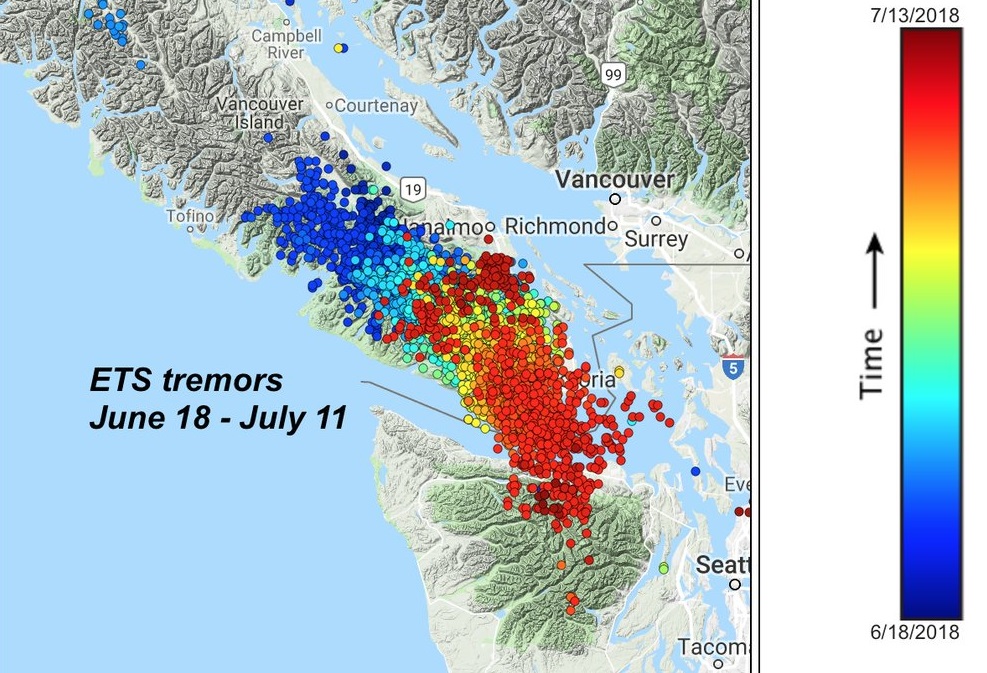You might not have noticed it, but over the last few months Victoria moved a little farther away from Vancouver.

The south portion of Vancouver Island has shifted about five millimetres — about the width of a pencil — westward, thanks to recent seismic activity.
READ MORE: No tsunami or damage expected after earthquake west of Haida Gwaii
That’s according to National Resources Canada earthquake seismologist John Cassidy, who has been measuring a wave of recent Episodic Tremor and Slip (ETS) events along the west coast.
He calls the phenomenon “remarkable.”
“When you think of Vancouver Island moving four or five millimetres over the course of a few weeks, that’s an amazing process that has been discovered,” he said.
Cassidy said the tremors began back in mid-May, and have been detected down the coast as far as northern California.
That process really picked up in B.C. in mid-June, with about 10,000 tiny ETS tremors detected on southern Vancouver Island and the Olympic Peninsula.
ETS refers to a geological process that happens between 25 and 45 kilometres below the earth’s surface, where one tectonic plate is being subducted (or forced) beneath another.
In B.C.’s case, the Juan de Fuca plate is being pushed underneath the North American plate building up pressure.
When ETS happens, a little bit of that pressure is relieved as the plates slip a few centimetres over the course of several weeks.
“It’s a remarkable process, it’s what we call a ‘slow slip.’ It’s the surface of the North American plate moving backwards towards the ocean,” Cassidy explained.
The resulting ETS tremors are so slight they can only be felt with specialized equipment.
The process isn’t fully understood yet, but scientists believe studying it could eventually help predict when and where major subduction earthquakes — like the anticipated “big one” — will hit.
According to Cassidy, ETS events are a regular occurrence that crop up every 14 months or so.
But he says Vancouver Island taking a little bit of a walk is a little more unusual.










Comments